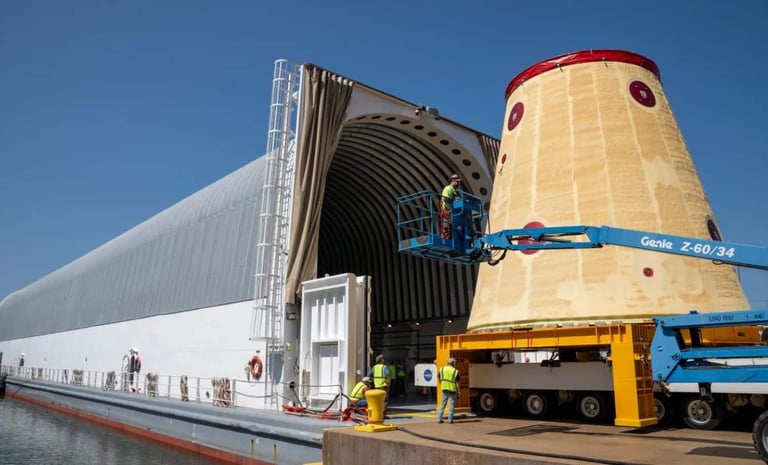NASA’s Artemis II Reaches Milestone with Key Rocket Component Move, Eyes 2024 Moon Mission
August 23, 2024
NASA's Artemis II mission, which aims to return astronauts to the Moon for the first time in nearly 50 years, has reached a significant milestone with the successful movement of the Launch Vehicle Stage Adapter (LVSA).
The LVSA, a crucial component of NASA's Space Launch System (SLS) rocket, has been transported from Marshall Space Flight Center in Huntsville, Alabama, to Kennedy Space Center in Florida for integration into the Artemis II rocket.
On August 21, 2024, the LVSA was loaded onto NASA's Pegasus Barge for transport via the Tennessee River to Kennedy Space Center, where it will undergo final assembly.
Measuring 40 feet tall and weighing 1,600 pounds, the LVSA is essential for linking the SLS's core stage and the interim cryogenic propulsion stage (ICPS), enabling the crew to enter lunar orbit.
The successful integration of the LVSA is vital for achieving the necessary velocity for the spacecraft to reach lunar orbit, showcasing NASA's innovative approach to space exploration.
The design and assembly of the LVSA involved years of research and development, with teams at Marshall responsible for ensuring it can support the weight of the Orion spacecraft while transmitting thrust from the rocket's engines.
Artemis II will mark NASA's first crewed flight around the Moon since the Apollo missions, carrying four astronauts in the Orion spacecraft and testing the SLS rocket in a deep-space environment.
This mission is set to provide valuable data for future missions, including Artemis III, which aims to land astronauts on the Moon by 2028.
The Artemis program aspires to land the first woman and the next man on the Moon, with Artemis II serving as a critical step toward establishing a sustainable human presence on the lunar surface and future Mars exploration.
Summary based on 0 sources